Most Hindus wish to complete the Kailash and Mansarovar Lake Yatra (journey) once in their lives as it is one of the holiest places in their religion. The holy pilgrimage is a true spiritual journey for Hindus, Buddhists and Jains. But to mingle with the religious pilgrims as a foreigner can be an equally interesting experience. It is a special trek, where you need to hike only 2 and a half days, and the rest is completed with vehicles. But for other reasons, it is one of the most challenging and at the same time amazing trails in Nepal. The 6500 meters high Mount Kailash towers behind the Himalayas in the middle of a deserted plain.
- What is the best season to complete the Kailash tour?
- The highlights of the trail
- What is the importance of the Kailash- Mansarovar pilgrimage trail?
- Why have people climbed Mount Everest but not Mount Kailash?
- How difficult is the Kailash Trek?
- How to prepare for the Kailash trail?
- The cost of the trekking
- How to register for the Kailash-Mansarovar Trek as an Indian citizen
- Restrictions to enter Tibet from Nepal
- Necessary documents to enter Tibet from Nepal
- The itinerary of the Kailash trekking (14 days from Kathmandu to Kathmandu)
What is the best season to complete the Kailash tour?
Only 4 months are suitable to complete the trekking, from June to September. Thousands of tourists (Buddhists, Hindus and Jains) come to the Kailash every summer. China invested a lot in improving the infrastructure, so now it is possible to drive at 100 km/h on smooth roads.
The highlights of the trail
- Get as close as possible to the holy Kailash mountain, where Lord Shiva resides according to Hindu belief
- Get spiritual salvation at the holy Mansarovar lake
- By completing the Parikrama you partake of the divine energy and experience a real spiritual life-changing journey.
What is the importance of the Kailash- Mansarovar pilgrimage trail?
The trail leads the pilgrims to two holy sites: Mount Kailash and Mansarovar Lake.
Even poor Hindus dream about getting there once in their lives well knowing that there is a good chance that they would die up there.
The Kailash Mountain (Kailash Parvat)
The Kailash Mountain is believed to be the abode of Lord Shiva, one of the principal Hindu Gods. Mainly Indians and some Malaysian Hindus complete the pilgrimage. But it can be interesting for tourists of other religions and nationalities too. It is a sacred place for not only Hindus but Buddhists and Jains as well.
Buddhists also call the summit Mount Meru or Guru Rimpoche, who spread Buddhism to Tibet and beyond. They believe that the Kailash is the embodiment of Lord Buddha.
Jainsbelieve that their first teacher, Adinath got liberated at this place.
The Bon believers (pre-Buddhist religion) say that their saint descended on this peak.
Click here to learn about the best short and long treks in Nepal
The main purpose of dedicated pilgrims is to complete the 52 kilometers “Parikrama” (circumambulate Mount Meru).
The Mansarovar Lake
The holy Mansarovar, fed by the melting glaciers of the Kailash Mountain, is the source of four rivers, which are crucial for the life of hundreds of millions of people in different countries:
1. The Brahmaputra (Tibet, India and Bangladesh)
Around 130 million people live in the river delta, who rely on the floodwater for agriculture and the river fish is one of their main nutrition. It is also a main water transportation route in the region. It means “The son of Brahma” in Sanskrit and considered a holy river by Hindus.
2. The Indus (Tibet, India and Pakistan)
Apart from being a holy river to the Hindus, agriculture and food production would be unimaginable without that in Pakistan. Besides, the dams built on the Indus are important source of energy in Pakistan.
3. The Sutlej (Tibet, India, Pakistan)
The more than 1400 kilometers long Sutlej joins the Indus in Pakistan. Its Bhakra Dam plays an essential role in northern India.
4. The Karnali
The Karnali is the longest river of Nepal that heads south and crosses the Western Himalaya ranges. It cuts its way through the gorges of the Himalayas and meets the holy Ganges in India. The only free-flowing river in Nepal is now in peril. They consider building hydropower dams on the river that could endanger the economy and environment of the riverside. Karnali is an extremely popular destination for kayaking, rafting with crystal clear blue water, gorges, and surrounding jungle. It is true that Nepal currently does not have a sufficient electricity supply, but there should be other ways to make up for that and leave the Karnali intact.
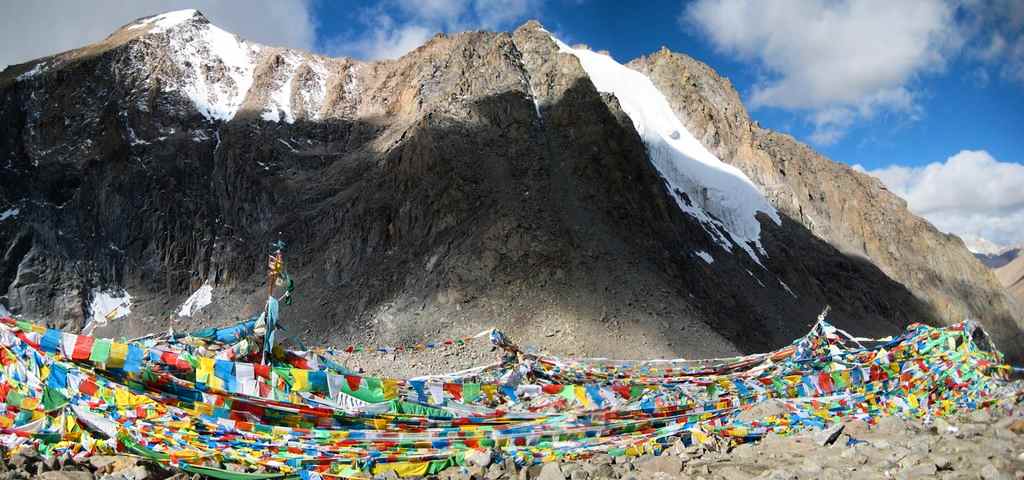
Hindus believe that Lord Shiva was meditating at the lakeshore and took a holy shower with Parvati.
Tibetan Buddhism says that if you bath with the sacred water of Mansarovar, it keeps away guilty thoughts and desires and washes away past sins. Pilgrims drink from its water and take a shower with it, believing that it saves them from all the disease. The Nepalese staff fixes the tents where the pilgrims can take the holy shower one by one.
When the pilgrims reach the Mansarovar Lake, the soul of Brahmin, they stay there for an extra day, and their priest makes a puja ceremony (Hindu religious ceremony) for them. Earlier, the pilgrims dipped in the freezing holy lake, but the local government banned it. Instead, they have a shower before performing puja with the holy water mixed with regular water. At the end of the ceremony, every pilgrim gets a tika (a vermilion paste on the forehead as a sign of Shiva’s third eye).
Some pilgrims make the whole circle around the lake, which takes three days. Though, most of them will do it with a vehicle. They believe that if they circumambulate the lake, their sins are washed away.
Why have people climbed Mount Everest but not Mount Kailash?
Mount Kailash has not been climbed yet simply because it is a sacred place. Climbing the peak of Mount Kailash is forbidden for Hindus not to perturb Lord Shiva in his meditation. Mountaineers should also respect that. Some made attempts to conquer the peak but failed. There is no political reason behind it, and it is also not because it is impossible to climb it.
How difficult is the Kailash Trek?
Difficulty: 7.5/10 if you do the Kora on foot, 7/10 if you do on horseback.
Though the actual hiking is only 2 and a half days, the high altitude makes it very challenging. Mount Kailash is a dry area behind the Himalayas. The absence of forest comes with less oxygen as well. For that reason, the symptoms of altitude sickness are a common problem during trekking. Even if Mansarovar Lake lies at 4700 meters, and it is essential to drink enough, many Hindus start to fast. Only some of them break the fast by drinking hot water or tee. For that reason, altitude sickness is a common problem during this trekking.
Altitude sickness gets dangerous when the water gets stuck in the brain or the lung. In this case, the only chance to survive is to immediately transport the patient to a 1000 meters lower altitude. But in Tibet, it is hard to manage that because the country is flat. So you have to take acclimatization seriously.
The most important thing the experienced mountain guides recommend to avoid altitude sickness.
– “Climb high and sleep low”. When you reach your camp that is located over 3000 meters, you should continue to climb some hundred meters more and return to the lodge
– “Walk slowly and drink enough water!” The best remedy for altitude sickness is drinking sufficient water. Dehydration is the principal cause of altitude sickness. When somebody has altitude sickness, he must drink water. If you are on a level that is 2000 meters higher than Kathmandu, you must drink at least 2 ½ liters a day. By 3000 meters, 3 ½ liters, by 4000 meters, 4 ½ liters, and so on. This is very important- says Bharat, who also gives lectures on that for future mountain guides.
– The guides are always prepared with Diamox tablet. Half a tablet every night before going to sleep and one tablet at a real high altitude can help prevent altitude sickness.
Big groups have a doctor with them for safety reasons.
How to prepare for the Kailash trail?
Avoid drinking alcohol and smoking at least a couple of months before the journey. You do not have to be extremely fit to be able to complete the trail. Several elderly can do that, but you definitely have to prepare for that.
Read more about how to prepare for trekking in Nepal-Tibet here
Some months before the trip, try to climb stairs, do exercise regularly
Make it a habit to drink enough before the trip so that you get used to that during the trek.
The cost of the trekking
A minimum of 5 people is required for the tour. For more than 10 people, the Kailash package from Kathmandu to Kathmandu costs $2200. If the number of participants is less than 10, the price amounts to $2700 per person. It makes sense to join groups of a minimum of 10 people to reduce the overall costs of the trekking.
The cost includes:
– One packed lunch during the day, breakfast and dinner
– All transportation costs
– Cost of the whole staff on Nepali and Tibetan side (guides, drivers and porters)
– Cost of visa and travel permit
They carry all the food from Nepal because the taste of vegetables and spices are different in Tibet. A separate kitchen van caters to the Non-Resident Indians, who prefer Western food.
How to register for the Kailash-Mansarovar Trek as an Indian citizen
Indian citizens have two options to complete the Kailash Mansarovar Trek. You either book it thorough the Government of India or through a private Nepalese tour operator.
1. Government of India
You can find all the information to complete it with the Ministry of External Affairs here:
http://kmy.gov.in/kmy/?lang=en
Both are good options. But if you register with the Government of India, your place is not granted. A lucky draw will decide on who can participate the same year in the Trek. You have to show an extract of your bank account and a mandatory medical examination. The Government of India offers some subsidies to the pilgrims, which is redeemable after the pilgrimage.
2. Nepalese travel agent
If you book your tour through a Nepalese travel agent, you can be sure to get a place.
Recommended trekking agency for the Kailash-Mansarovar Yatra: Nature Explore Trek
Restrictions to enter Tibet from Nepal
1. You cannot enter Tibet individually, only in a group with a tour guide. It is compulsory to have a Tibetan driver and tour guide. You either join a group or hire a private guide for your tour.
A minimum of 3 people is allowed to stay anywhere in Tibet. The Tibetan prefectures found in northern Sichuan, western Sichuan, Qinghai, southwest Gansu, and northwest Yunnan are (usually) open and do not require travel permits or a tour guide. In Lhasa, if you hire a guide for the monuments you can hang around after that alone.
The reason why travelers cannot travel freely in Tibet is that the Chinese government wants to keep all movements under control due to the tense relation between Tibet Autonomous Region and China. There is strict military control in Tibet equipped with surveillance cameras in every big city.
2. Stick to your travel itinerary, do not travel illegally, and follow the instructions of your guide.
3. Do not keep a photo of the Dalai lama with you, and avoid talking about sensitive political topics
4. Control at the Nepalese-Chinese border: The Kailash tour starts with a drive to the Timure border with Tibet. Since Tibet is not recognized as an independent country but an autonomous region of the People’s Republic of China, Chinese officials execute a strict border control on tourists entering Tibet. China does not appreciate much that the foreigners head to the Kailash route, but they opened the border under international pressure.
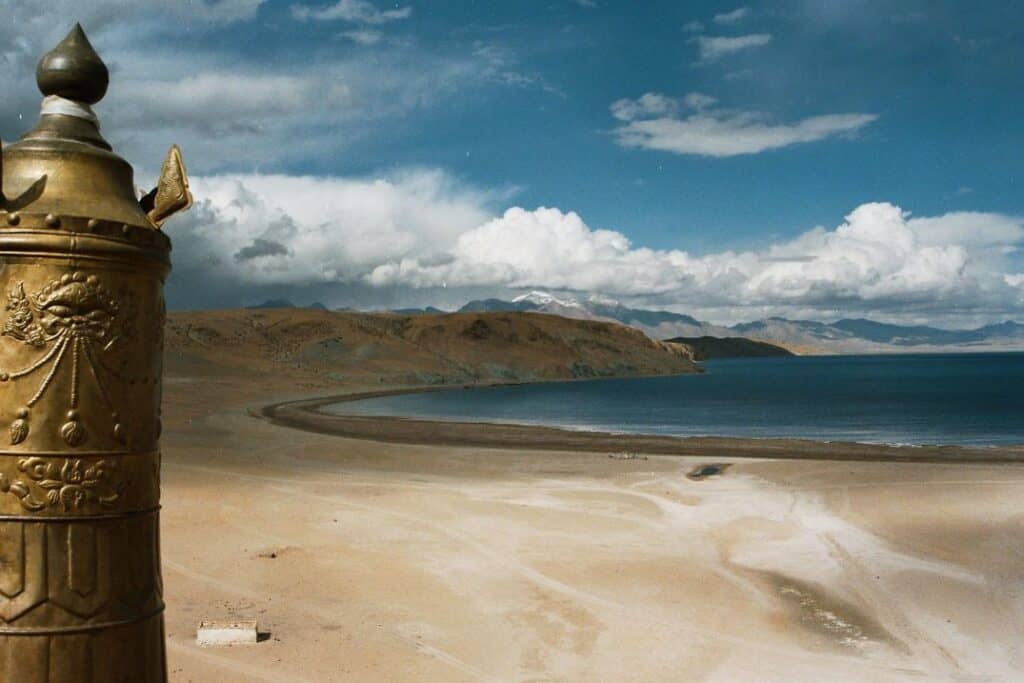
Necessary documents to enter Tibet from Nepal
Several documents and permits are needed to travel to Tibet, which may seem very complicated. But you do not need to worry too much, as your travel agency will arrange everything for you. They are up-to-date about all changes.
Every person who wants to enter Tibet needs a Chinese Group Tourist visa and a Tibet travel permit, including Nepali citizens. If you travel to a restricted destination (Everest Base Camp, Mount Kailash, Ra Wok (Lake), etc.), you need a Military visa and an Alien’s Travel permit as well.
Tibet Group Visa
If you enter Tibet from Nepal by land or air, regardless you have a Chinese visa or not, you need to apply for a Tibet Group visa at the Chinese Embassy in Kathmandu. This is not a visa to be stamped in your passport. The Tibet Group Visa is an A4 paper indication of your entry and exit time. The Tibet Group Visa is valid during the trip, but a maximum of 30 days if you plan to extend your stay in Lhasa.
The Chinese Embassy in Nepal issues the visa in a 3-days-time. The cost of visa to Tibet for Europeans and Asians: 85 $, for Americans and Canadians: 155 $, for Nepalese 60$.
Tibet Travel Permit
The Tibet Tourism Bureau (TTB) will issue your travel permit indicating your exact travel itinerary and tour operator. Once issued, no major changes will be allowed. The TTB will forward the “Visa Invitation letter” to the Chinese Embassy in Kathmandu, based on which you can get the Visa at the Embassy upon your arrival in Kathmandu. Tibet Travel Permits normally take 12 to 15 days to be processed.
Alien Travel Permit
You need the Alien Travel Permit issued by the Public Security Bureau if you travel outside the Lhasa-Shigatse area in one of the 6 prefectures: Shigatse, Nyingchi, Shannan, Ngari, Nagchu, Qamdo. Mount Kailash is located in Ngari prefecture, so you also need it for your Kailash-Mansarovar yatra.
Military Permit
For some restricted areas, such as Mount Kailash, travelers are required to obtain Tibet Military Permit. This permit is issued in Lhasa by the military authority. The last two permits can take up to 4 weeks to be arranged.
Important: Since you are obliged to get all the documents through a travel agency, you have to book this trail at least two months ahead of departure! In peak season (June-July-August) limited accommodation and flight tickets (if you choose to fly to Lhasa) are available. You have to book the tour by a Tibetan local travel agency. Nepalese agencies are not permitted to book directly.
The itinerary of the Kailash trekking (14 days from Kathmandu to Kathmandu)
You have two possibilities to complete this trail. You can directly head to the Kailash-Mansarovar trail from Kathmandu, or you can first go to visit Lhasa before going on the pilgrimage.
1. Visit Lhasa before going to Mount Kailash
There is a direct flight from Kathmandu to Lhasa. This is the only international flight that connects Tibet with other countries. Probably the most jaw-dropping flight in the world over the Mount Everest, Mount Kanchenjunga, Mount Lhotse, and you have an incredible view of other peaks of the Everest range.
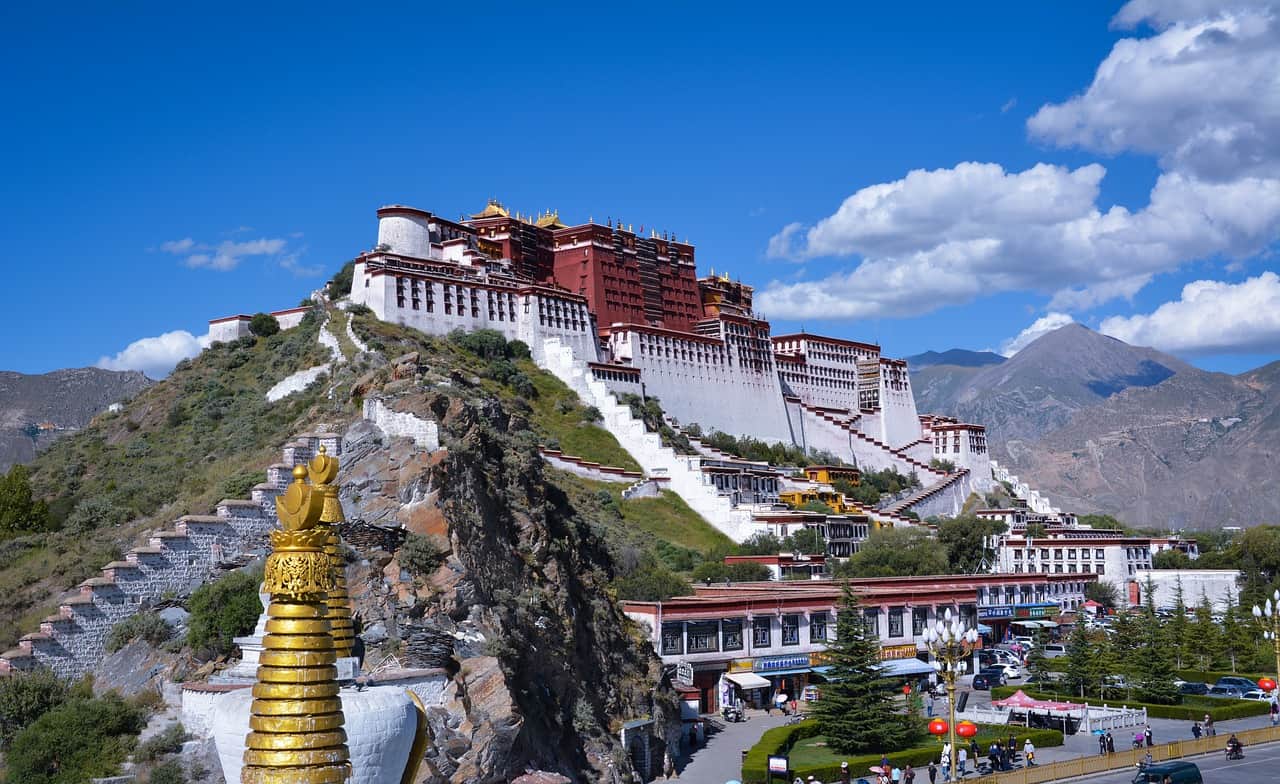
Kathmandu – Lhasa: You spend 1 day and 2 nights in Lhasa to visit the amazing Potala royal palace, Buddhist monasteries and temples.
Lhasa- Shigatse: Then you continue to visit Shigatse, located 300 kilometers from Lhasa. The main landmark of Shigatse is the Tashilhunpo Monastery, the seat of the Panchen Lama, the second most important figure in Tibetan Buddhism after the Dalai Lama.
Shigatse-Saga: Drive to Saga (7-8 hours, 500 km). From there, you follow the regular itinerary of the Kailash trek.
2. Go directly from Nepal to complete the Kailash-Mansarovar yatra
1-2. day: Kathmandu
After arriving in Kathmandu spend one day with acclimatization. It is a great chance to discover the historic monuments and monasteries of the capital, including the Boudhanath Stupa, the Swayambhunath Temple, the Pashupatinath Temple, Kopan Monastery or to take a cable car to the Chandragiri Hills.
3. day: Drive from Kathmandu to Syabrubesi (1500m)
It takes 6-7 hours to drive to Sybrubesi. If you look for a more comfortable way, you can take a helicopter for an extra cost of 1500$ (5 persons).
4-5. day: Drive from Syabrubesi to Kyerong (3000m)
You drive to the Timure border crossing on the Nepalese side (70km). Being a busy crossing point between the two countries, the border-crossing procedure takes at least an hour. Chinese officials check all your documents. At the border, Tibetan guides and drivers must join the group to comply with Chinese regulations. You will cross the Friendship Bridge that connects Nepal with China.
The Gyirong border always played an important role in the trade between Nepal and China, but it has only been open for international use as of 2014. This crossing is now the main entry to Tibet since the principal Zhangmu-Kodari border crossing was heavily damaged in the earthquake of 2015.
After the border crossing procedure, you continue to Kyerong (Gyirong, Kyirong, Kerung, Kirong) city, located only 40 kilometers from the Tibet-Nepal border. This small village is the main entry point to the Tibet Autonomous Region of the People’s Republic of China from Nepal.
Kyerong, the attractive Chinese town, has a wonderful location in the Kyerong valley amid lush green forest area and snow-covered peaks. Once a small village developed into a busy trading town that offers accommodation for every budget with comfortable hotels, guesthouses and hostels.
Pilgrims usually spend two nights in Kyerong city for acclimatization. Different from the otherwise deserted landscape of Tibet, the valley gets plenty of precipitation.
6. day From Kyerung to Saga (4485m)
The drive to Saga takes 4/5 hours (270km). On the way to Saga, you drive over some 5000 meters-high passes. From the top of the Kerung pass, you will see Mount Everest, the Cho Oyu, and other amazing peaks of the Himalaya range. The green landscape turns into rocky dry brown scenery while passing through small Tibetan villages. The road is windy, goes continuously up and down, but it is a smooth ride.
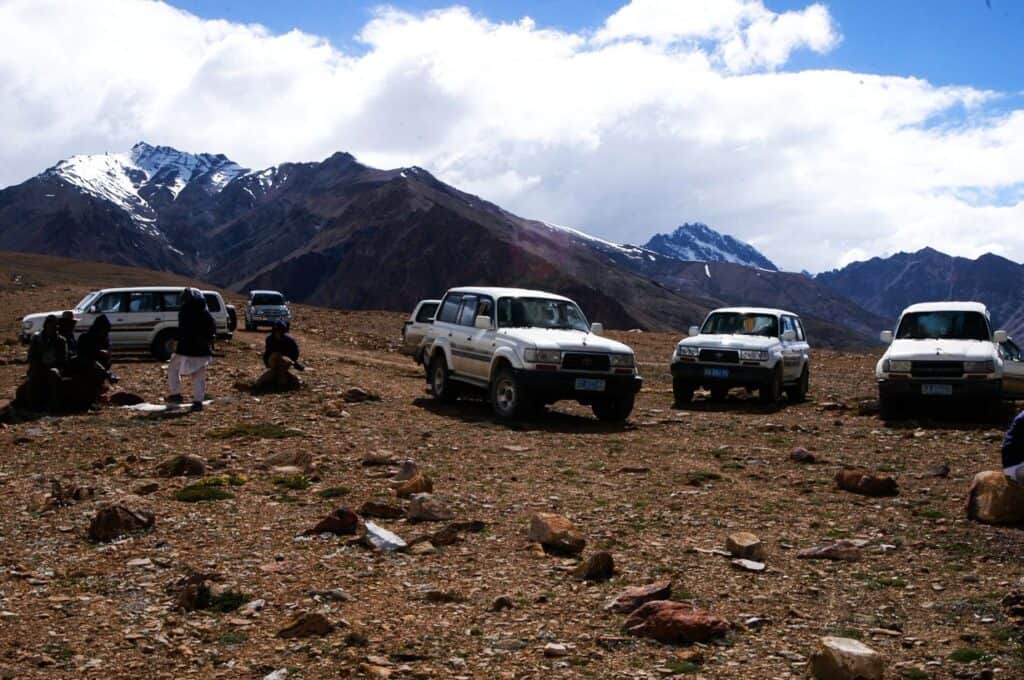
Saga is the last stop for all the trekkers heading to Mount Kailash. There is less to see, but it has comfortable guesthouses, hotels, and restaurants. At the same time, an important crossing of main roads with a strong military presence.
One night in Saga.
7. day From Saga to the Mansarovar lake
On the way, you cross the Saga pass (4900m). This is the first day when you catch a glimpse of the holy Kailash.
You spend the night at the shore of the Mansarovar Lake in Chu Gumba village, in a simple guesthouse with 4-5 people sharing one room. In peak season you have less chance to get a private room. Being right at the lake, pilgrims can go early morning to the holy water to be blessed with divine energy. Visit the old Tibetan monastery of the village too.
One day in Chu Gumba
8. day: From Chu Gumba to Darchen (4600m)
The pilgrims will go for the morning puja with the Hindu priest. After having lunch, pilgrims leave for Darchen city (40km, 1 hour). This is the base camp for Mount Kailash. Darchen was for almost 300 years a Buddhist enclave of Bhutan until the People’s Republic of China annexed it in 1959.
Darchen has several hotels, including the 4-star Hotel Himalaya Kailash that is very popular among tourists. Plenty of Chinese and Tibetan medical shops welcome visitors in the main street.
Darchen is where your 2 and a half days, 53-km long “Parikrama” or “Kora” (circumambulation of the Mount Kailash) will start and end.
- nights in Drachen.
9. day: From Drachen to Dirapuk (4800m) – 1 st day of the Parikrama/Kora – 12 kilometers walk
You drive in the morning 5 kilometers to Tarbuche village. Those who are not fit enough to continue can make a “mini-Kora” here and return to Darchen to wait for the others who complete the circle.
Pilgrims can either walk or hire a pony horse and a porter. If you want to use this service, you have to decide the day before and book it from Darchen. Your only option is to hire for the whole circumambulation, i.e. for 3 days. It costs 960 yuan (150$). The trail is slightly ascending to Dirapuk village, where you have a close view of the Kailash. It is an easier part of the trail.
Dirapuk has only one hotel and few guesthouses. It is more a tent village built around a monastery.
One night in Dirapuk village.
A possible side trek to touch Mount Kailash
Some people stay one more night in Dirapuk and attack the North face of Kailash. A very demanding one day trek, only recommended for fit, experienced and adventurous trekkers. They cross a glacier before actually being able to touch the Holy Mountain. This is an optional trail that is not part of the Kora (Parikrama). Some make it halfway and turn back.
10. day From Dirapuk through Dolma Pass (5600m) to Zutulpuk – 2nd day of the Parikrama/Kora
The most difficult day is ahead of you with a total of 22 kilometers (9-10 hours) to walk. On this day, you get to the top of the Dolma Pass, the highest point of the Trek (5600m). It is a strenuous 3 and a half to 4 hours walk on foot or 2 hours on horseback. But the view is worth all the efforts. The Mount Kailash and other snow-covered peaks tower in the middle of the deserted landscape. After a little descent on the other side, you see another holy lake, where Parvati was meditating according to Hindu belief.
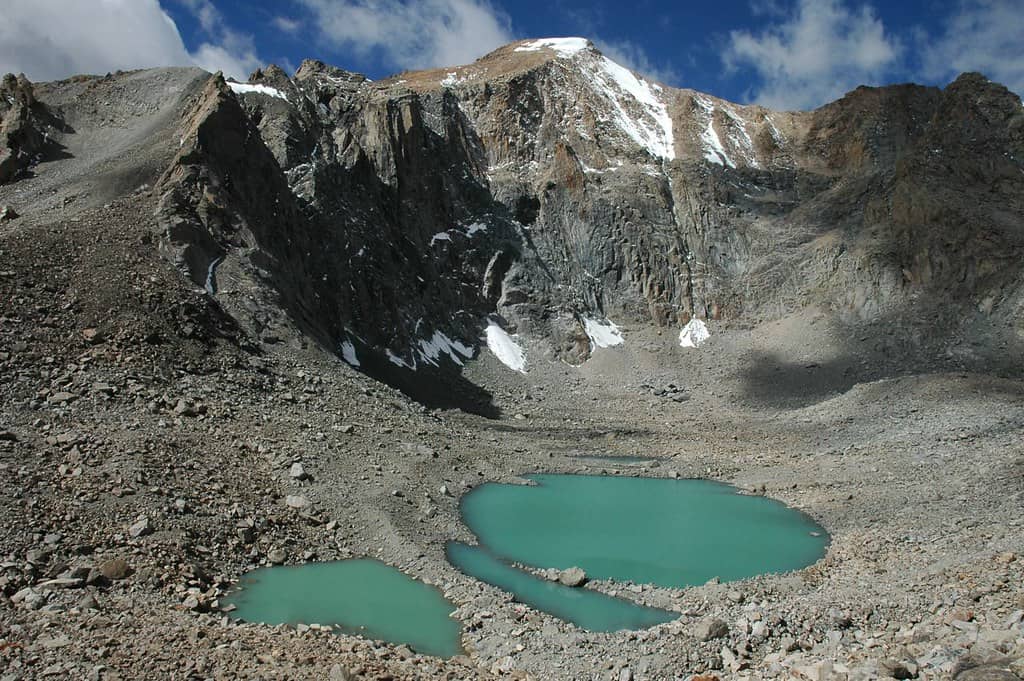
After a 5 kilometers descent, you can have a short break in a guesthouse to collect your last energies to complete the last 11 kilometers to Zutulpuk.
One night in Zutulpuk in a guesthouse.
11. day From Zutulpuk to Darchen
A 5km walk and a 20 min drive to Darchen. After this mentally and physically challenging tour, this is time to celebrate, dance and laugh all together.
After having lunch, you drive back to Kathmandu or stay one more night Darchen.
A possible side trek to the South face of Kailash
After returning from the Parikrama, some decide to conquer the South face of the Kailash as well. This is another adventurous and challenging trail that you can only complete with a good Sherpa team. They will fix the ropes for the technically challenging trail. You will pass by a monastery and will have a stunning view of the Astaparbat (considered as part of the body of Shiva) and other peaks. It is an amazing mental and physical challenge and a spiritual blessing.
Since you cannot spend the night in tents, you need to return the same day.
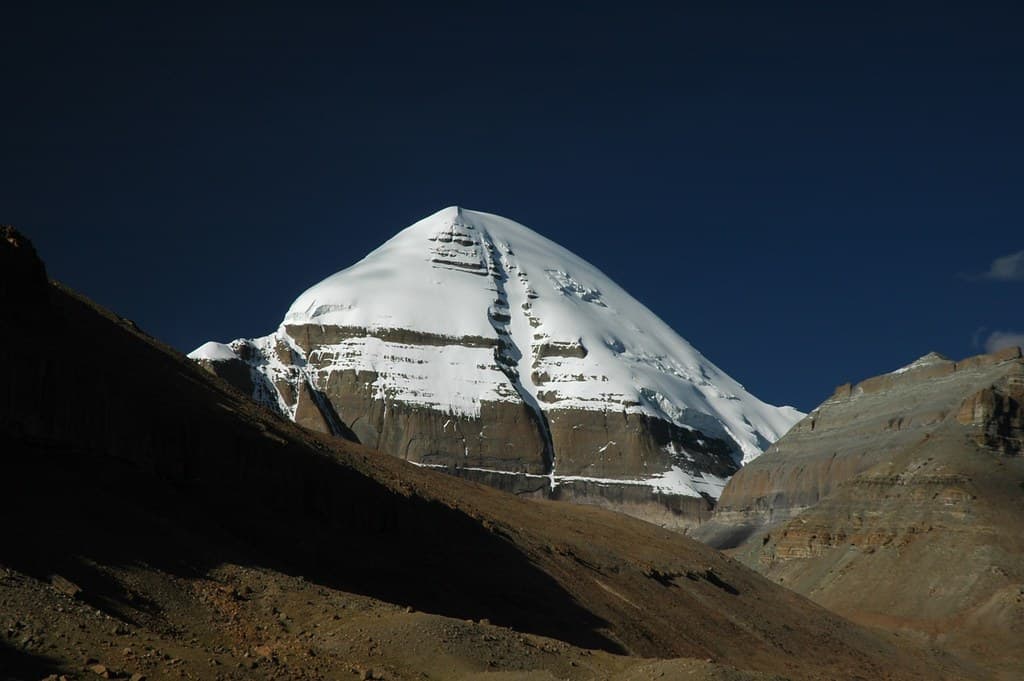
12. day Drive back to Saga 4500m (550km, 7-8 hours)
13. day Drive back to Keirong (3000m) 4-5 hours
14. day One long day drive back from Keirong to Kathmandu (1350m)
This spiritual journey will both mentally and physically challenge you. Start your preparations a couple of months ahead and book your tour with a reliable travel agent. These 2 and a half days will be challenging due to the high altitude, but if you follow the suggestion of experienced mountain guides, it will be your life-changing spiritual experience.
If you have any more questions about your trek, please leave a comment, and the mountain guides from Nature Explore Trek will answer you.
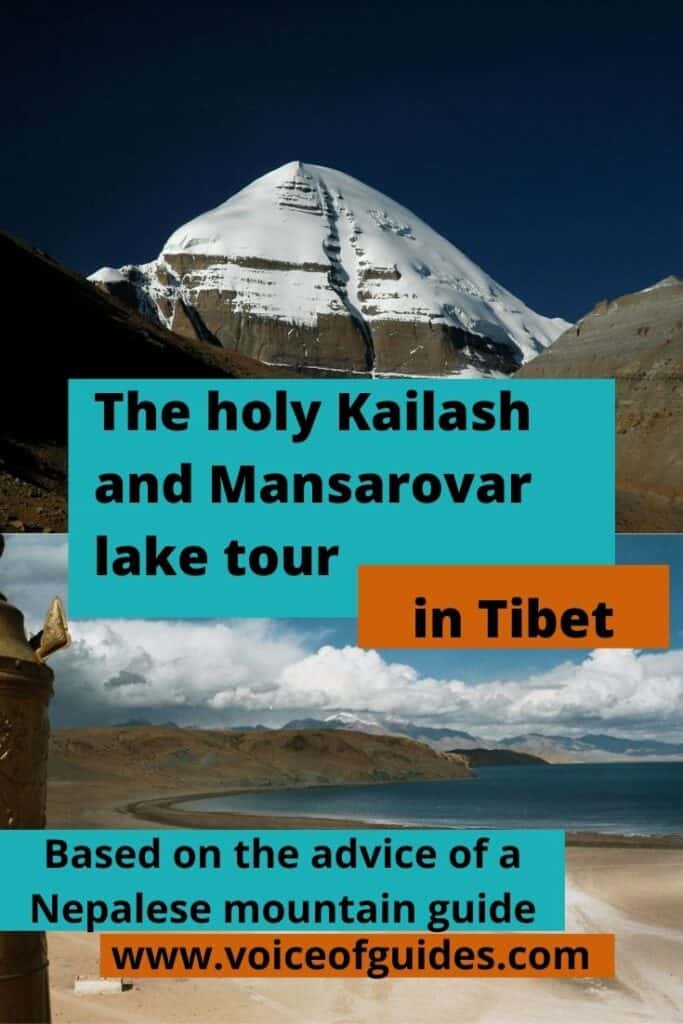

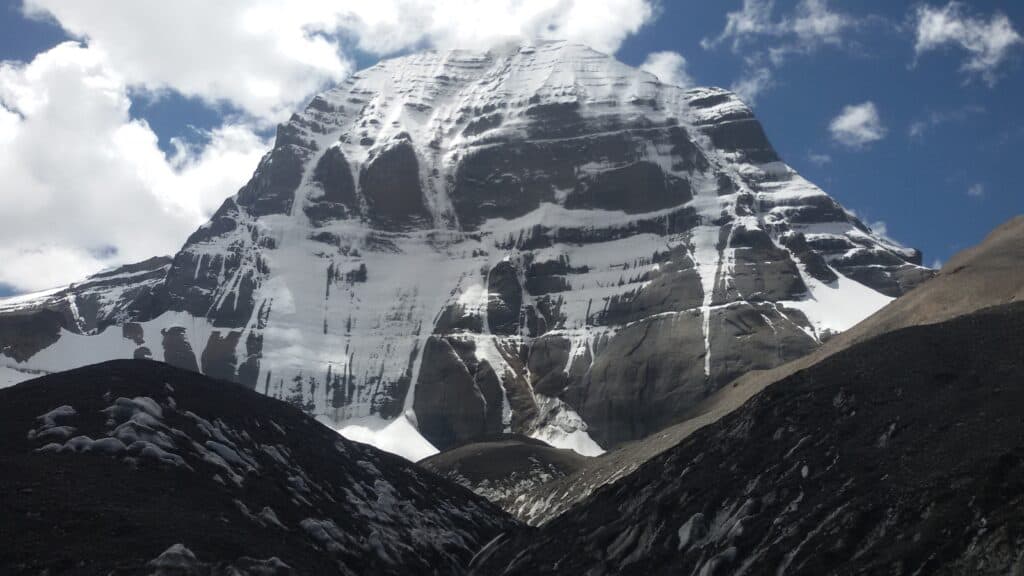


Pingback: The best short and long treks in Nepal | Voice of Guides